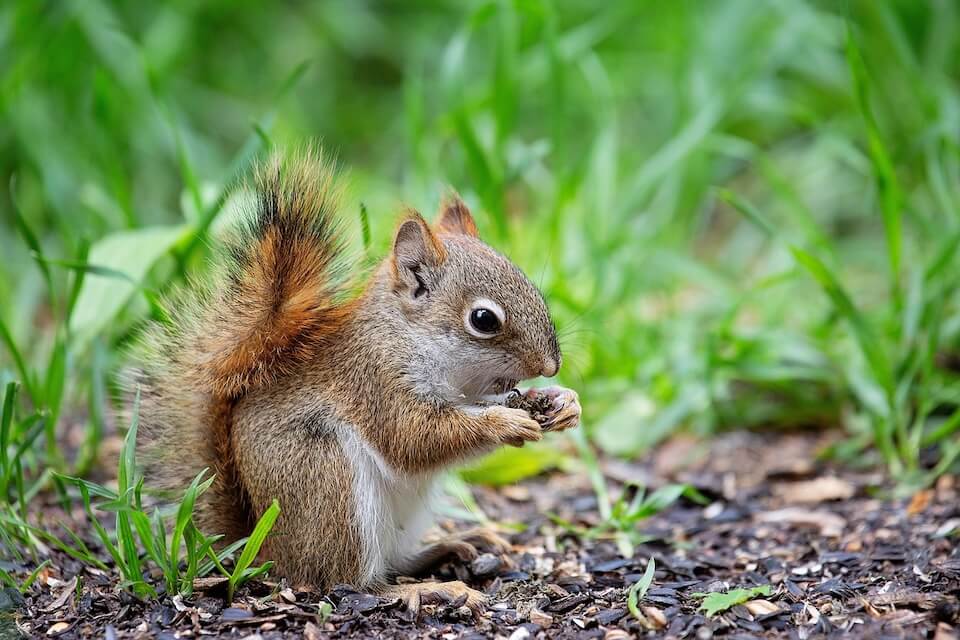It’s that Time of Year! What to Do If You Find a Baby Animal

It’s that time of year—spring has arrived, and with it comes a surge in wildlife activity across Ontario. As temperatures rise, many species—including raccoons, squirrels, and skunks—begin nesting in cozy, quiet places. Your attic, shed, or chimney may look like prime real estate to a mother animal trying to protect her young. And that means you might unexpectedly come across a baby animal on your property. Knowing how to respond could be the difference between life and death for the animal.
Ontario wildlife centres are already sounding the alarm about a dramatic increase in orphaned animals, urging people to think twice before interfering. (Learn more here). So let’s break down what to do—and just as importantly, what not to do—if you discover a lone wild baby.
First: Don’t Panic—or Pick It Up
It’s natural to feel concerned when you spot a baby squirrel on the ground or baby birds fallen from a nest. But appearances can be deceiving. Most baby wild animals are not actually abandoned. Mothers often leave their babies temporarily while foraging or scouting for threats. In fact, interfering too soon might avoid attracting predators, but it can also scare the mother away for good.
Here’s a rule of thumb: keep a watchful eye from a distance for several hours. You may spot the mother squirrel, mother rabbits, or other species returning when they feel the area is safe again. If the baby animal appears healthy and is not in immediate danger, let nature take its course.
When to Step In—and How
There are situations where intervention is appropriate. Call a licensed wildlife rehabilitator or animal control professional if:
- The baby is visibly injured (bleeding, limping, or cold to the touch)
- You’ve found a dead parent nearby
- The animal is in an unsafe location (e.g., road, near air conditioning vents, or in direct sun)
- It’s been more than six hours with no sign of a returning adult
If you must move the animal temporarily while waiting for help, use gloves or a towel. Place the animal in a secure, ventilated container lined with soft cloth. Never feed it or give milk—this can cause more harm than good. You can use a hot water bottle (wrapped in cloth) to keep small animals warm, but avoid placing it in direct sunlight or next to heaters.
Special Cases: Baby Skunks, Rabbits, and Hares
Some species require extra care due to their sensitivity. Baby skunks can spray as early as three weeks old, so don’t handle them unless absolutely necessary. Baby rabbits and baby hares are often mistakenly taken from nests because people assume they’re abandoned. In truth, mother rabbits feed only twice a day to avoid drawing attention to the nest. If the nest is undisturbed and the babies look healthy, leave them be.
The Risks of Keeping Wildlife
It’s tempting to want to “help” a baby animal, but keeping orphaned wildlife is illegal in Ontario without a proper license. Even brief contact can leave them vulnerable to disease or imprinting. Not to mention, young wild animals can carry parasites or transmit infections.
What If They’re Already in Your Home?
If you hear chittering, scratching, or movement behind your walls or in the attic, you may have a nest of baby squirrels or raccoons. This is not a DIY fix—trying to remove them yourself can lead to separation from their mother or even aggressive encounters.
SWAT Wildlife provides humane, professional squirrel removal, raccoon removal, and skunk removal throughout the GTA and beyond. We specialize in safely relocating animals while ensuring your home is properly sealed and protected.
Call the Experts at SWAT Wildlife
When in doubt, it’s best not to guess. Improper handling of baby wild animals can cause lasting harm—to them and to you. If you’ve discovered an animal on your property and aren’t sure what to do next, contact us.
We’ll assess the situation, guide you on next steps, and provide professional, compassionate solutions that prioritize both your safety and the welfare of Ontario’s wildlife.